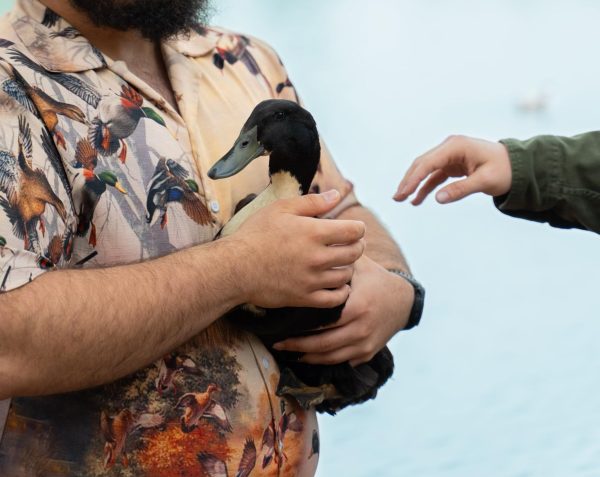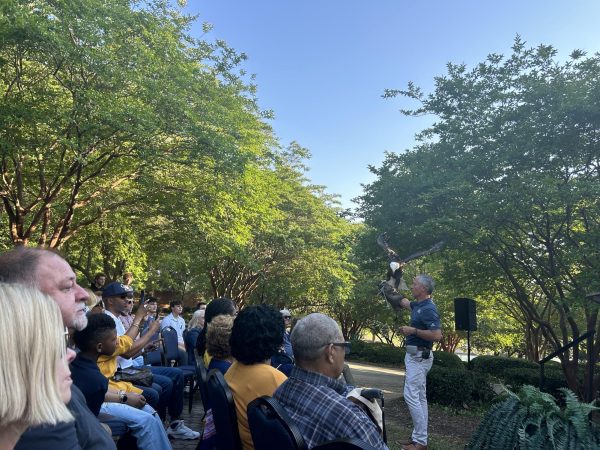Consolidation efforts continue over Summer break
August 15, 2017
The University System of Georgia announced the recommendation for a consolidation between Georgia Southern University (GS) and Armstrong State University (ASU) in January 2017. The new consolidated institution will be called Georgia Southern University.
The following month the Consolidation Implementation Committee (CIC) was formed to begin making recommendations for how the new university will operate.
The CIC is comprised of 41 members including administrators, faculty members and student representatives from both ASU and GS (20 each) as well as one member from Savannah State University.
The CIC was tasked with sorting out the fine details of the merger, which were separated into 93 categories that are managed by individual teams named Operational Working Groups (OWGs), according to consolidation.georgiasouthern.edu. These decisions impact how the new organizational structure of the university will impact everything from college names, student organizations and even technical support.
“The Consolidation Implementation Committee this summer approved over 500 recommendations from some 90 different working groups composed of faculty, staff and students from both institutions,” President Hebert said in his Fall convocation speech last Wednesday.
The implications of these decisions are far reaching and have already begun to affect GS and ASU students. So for those of you who haven’t had the opportunity to keep up, here’s a quick guide on what recommendations have passed, what recommendations are coming and how you can get involved in the process.
Structure and Academics
One of the first questions addressed by the CIC was the organizational structure of the new university and the chain of command.
Another landmark recommendation was brought to the floor on May 10, that proposed a restructuring of the current colleges into the following organizational chart.
The organizational structure was first postponed to a later date after the original structure sparked an avid online discussion online between students. However, a new structure was finally approved during the May 24 CIC meeting with minor changes.
On July 25 it was announced that the police departments of both campuses would consolidate by July 29, with current GS Chief of Police Laura McCullough leading the new department and Armstrong’s interim Chief taking a leadership role within the organization as well.
“The early integration of University Police Departments will allow for upgraded equipment and aligned training standards,” McCullough said in a press release posted by the university on the consolidation website. “We will be fully integrated well before the start of the fall 2017 semester.”
Athletics and Student Organizations
Another topic on the list of OWGs is Athletics.
This was one of the first topics brought into question by many students and student-athletes from both universities.
Athletics was addressed at the very first official CIC meeting on March 3, and recommendations were both made and approved that meeting, the first being to honor the original athletic scholarships, now known as University Grants, made to all ASU student-athletes.
However it was announced shortly afterwards on March 7 that ASU would cease all NCAA competition at the conclusion of the 2016-2017 season.
“This was a very difficult decision, but it is in the best interest of our student-athletes,” said Lisa Sweany, Armstrong’s athletic director, in a press release released on the consolidation website on March 7.
The press release state that due to the change in the athletics operations many teams have been left with less than players than necessary to form a full team, which could put the remaining student athletes in “potentially harmful playing situations” according to the statement released on the consolidation website.
After the announcement of the consolidation, many student athletes were given the opportunity to transfer without penalty to other schools and begin competing immediately.
The CIC also passed recommendations allowing ASU students access to GS sporting events starting this Fall 2017 as well as limited transportation options to selected events, yet to be determined.
The fate of student organizations has also been called into question.
A number of recommendations have already been passed by the CIC concerning Greek life, campus recreation programs, Student Government Organization (SGA) and others.
The CIC has passed recommendations that both campuses adopt the BANNER tracking system for fraternities and sororities and combining the current operating and procedures policies of both universities, while “maintaining the integrity of chapters on each campus” according to OWG 17-2 on the consolidation website.
A recommendation was passed that will combine the governing bodies of both campuses into one SGA.
Both the Statesboro and Armstrong campuses will be represented by their own executive officers and governing bodies, however they will both report to one SGA president.
The same recommendation also called for the merging of both constitutions into one constitution, however each governing body “will maintain their individual by-laws.” according to OWG 17-5 on the consolidation website.
“There has been extensive communication between our Student Governments. The President of the Armstrong SGA and myself are in constant communication about matters relating to our student bodies and also the overall consolidation process,” Dylan John, GS SGA President, said.
Other recommendations made under this OWG include allowing students to access and utilize recreational services at both campuses regardless of the student’s campus affiliation, and OWG 17-3 calls for the creation of videos, presentations and displays to “to keep history alive regarding the consolidation of the two units.”
What’s to come and How to get involved
The consolidation is to be implemented, in full, starting in the Fall semester of 2018.
The timeline on the consolidation website has laid out many key tasks that are to be completed in between now and then, but most notably, CIC meetings are to continue until all 93 OWG tasks are completed and approved.
The administration consolidation is set to take effect in January of 2018, as well as the newly integrated procedures for the Fall 2018 class registration.
For more information, updates and to give feedback you can visit the consolidation website at consolidation.georgiasouthern.edu














